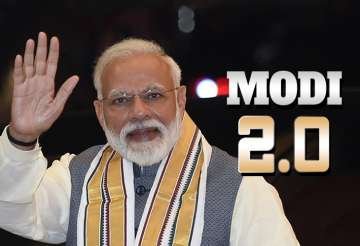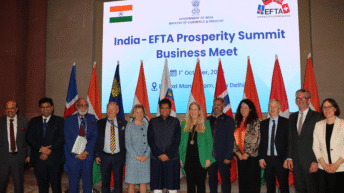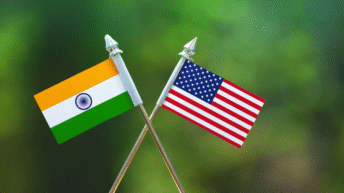
Prime Minister Narendra Modi’s second term has been both momentous and tumultuous. The spectacular defanging of Article 370 of the Constitution was followed by stiff resistance to the Citizenship Amendment Act and horrendous riots in Delhi, political opposition to the pro-farmer legislations, and challenges posed by the Covid-19 pandemic that were overcome in 2020 but returned with a vengeance in 2021.
A historical blunder was rectified on August 5, 2019 when Article 370 was defanged and its illegal appendage, Article 35A, expunged. India’s northern State was bifurcated into the Union Territories of Ladakh and Jammu and Kashmir. The stunning development caused dismay in Islamabad and Beijing; Pakistan illegally occupies Gilgit-Baltistan and a sliver of Jammu that it calls Azad Kashmir, while China occupies Aksai Chin and covets more territories in Ladakh where there is an on-going prolonged military stalemate.
But there was little that either could do as New Delhi had operated within the internationally recognised Line of Control; moreover, the Bharatiya Janata Party had fulfilled an old Jan Sangh promise to annul the Kashmir-specific Articles 370 and 35A that figured in its election manifesto in 2019. Terrorism has sharply declined in the Kashmir Valley, though some level of Pakistan-sponsored infiltration continues despite the renewed call for ceasefire; overall, the situation is far better than it has been in past decades.
Although not directly related to government action, a major goal was attained when the Supreme Court, on November 9, 2019, unanimously awarded the disputed land in Ayodhya to the infant Sri Rama and the Ram Janmabhumi Nyas, on the basis of evidence presented in court, thus bringing a five century old dispute to closure. It is pertinent that those who welcomed the verdict included former Congress President Rahul Gandhi, BSP leader Mayawati, and Shiv Sena President Uddhav Thackeray.
The challenges of the second term began with the passing of the Citizenship Amendment Act (CAA) in December 2019. All opposition parties united to oppose the legislation, with virulent propaganda that one community was its intended target. There were protests in several cities and coordinated violence in the capital. The most eye-catching opposition was at Shaheen Bagh, where Muslim women staged a sit-in for weeks throughout the winter, ignoring the Government’s entreaties that the law did not even apply to Indian citizens. The courageous move to abrogate triple talaq (July 2019) and save thousands of women from being thrown out of their homes without due process of law, left them unmoved.
The CAA was a logical corollary to the extension of the Constitution of India to the erstwhile State of Jammu and Kashmir, and addressed the need to resolve the citizenship status of Hindu refugees who had come there in 1947. Given the plight of minorities in the neighbourhood, it was extended to persecuted minorities in Pakistan, Bangladesh, and Afghanistan. It is well-known that the Nehru-Liaquat Pact (1950) failed to protect minorities in Pakistan. Moreover, Muslims can seek citizenship under existing laws (given in recent years to 2830 persons from Pakistan, 912 from Afghanistan, and 172 from Bangladesh).
The Citizenship Amendment Act fulfilled the unfinished promise of partition. At a prayer meeting in Delhi (July 16, 1947), Mahatma Gandhi assured that if minorities were unable to live in Pakistan, India would “accept them with both arms and extend to them all legitimate opportunities”. On November 5, 1950, Jawaharlal Nehru reiterated the pledge in Parliament. But the saga of unfulfilled promises continued and in June 2012, CPI(M) General Secretary Prakash Karat urged then Prime Minister Manmohan Singh to provide succor to Bengali refugees, most of whom belonged to Scheduled Caste groups.
The real crisis was in Assam. In 1950, the Illegal Immigrants (Expulsion from Assam) Act was passed to protect Hindu refugees from East Pakistan and expel infiltrators. Nothing happened, and in 1983, the Illegal Migrants (Determination by Tribunals) Act clubbed Hindu refugees and Muslim illegal immigrants as “illegal migrants”, with March 25, 1971 as cut-off date to detect illegal migrants. The Assam Accord of 1985 retained 1971 as cut-off date (Section 6A of Citizenship Act) and thus legalized Muslim illegal migrants till 1971 as All Assam Students Union (AASU) fell unwittingly into the Congress trap. Finally, in 2005, the Supreme Court repealed the IMDT Act and revived the Illegal Immigrants (Expulsion from Assam) Act 1950, thus protecting Hindu refugees. But in December 2004, Congress amended the Citizenship Act and inserted “illegal migrant” into Section 2, so that illegal migrants (including Hindus) cannot even apply for citizenship.
This malice was nullified via the Citizenship Amendment Act. As the BJP came to power in May 2014, it fixed December 31, 2014 as cut-off date for applying for citizenship as the date must be on or after July 12, 2005 when the Supreme Court ruled on the IMDT and 1950 Acts. The Citizenship Amendment Act led to riots in Delhi, with the left-lib elite unfazed by the brutal killing of an intelligence officer and other innocent civilians; a radical politician used his terrace to throw petrol bombs on civilians. In all, nearly 53 persons died and over 500 were injured.
2019 ended and 2020 opened with growing awareness of the spread of the SarsCov2 (COVID-19) virus. India spent much of the year fighting the virus, imposed restrictions on foreign passengers in early March and announced full lockdown for nearly two months during March-May 2020. India joined the global race to produce a vaccine and led in the manufacture of vaccines and their supply to many countries. Two Indian-made vaccines were released by the end of 2020; India sent vaccines to several neighbours and small countries to help fight the pandemic.
Governance, however, must continue, and the government enacted three laws to reform the agriculture sector in response to long-standing demands by farmer bodies for ‘one nation one market’ and barrier-free trade for agricultural produce outside notified grain markets. However when it moved the laws ending licence-permit raj and inspector raj in agriculture, the Akali Dal quit the NDA.
By May 2021, the Centre had procured the grains of two harvests and made direct payments into the bank accounts of farmers, who experienced the benefits of middleman-free deals for the first time. Many admitted that arhatiyas, who are also moneylenders, would pay them far less than the minimum support price and that too, long after the harvest season had ended. Now, payments are prompt, with legal remedies available in the event of non-payment. Moreover, payments have to be made against PAN cards and linked to land records; thus no third party can collect payment for the produce of smaller farmers. In coming years, it is likely that small farmers may not need loans to buy inputs if they can sell directly to mandis or private traders and receive full and prompt payment.
This development enraged farm “leaders” from Punjab, Haryana and Western Uttar Pradesh who staged a prolonged blockade of the capital for months and went on the rampage in the capital on Republic Day. They were supported by international celebrities (US Representative Ilhan Omar; entrepreneur Meena Harris; pop singer Rihanna; Swedish teenage activist Greta Thunberg; actress Amanda Cerni; singer Jay Sean, composer Dr. Zeus and former ‘adult movie’ star Mia Khalifa). An accidentally leaked “toolkit” by Thunberg revealed the presence of the Canada-based Poetic Justice Foundation and World Sikh Organisation that espouse an independent Khalistan (in Indian Punjab) in the agitation.
To recover ground, Bharatiya Kisan Union leader Rakesh Tikait was made the face of the movement. Unembarrassed by the mayhem of Republic Day and the role played by the blockades at Tikri and Singhu borders in taking COVID deep into the countryside, Tikait is demanding repeal of the laws; on May 26 he led a blockade at Tikri border to commemorate six months of farmers’ agitation. All farmers were seen without masks, despite the fact that at least two farmers recently collapsed at the border and died of COVID.
The second COVID wave caught the government off-guard; its virulence overwhelmed the hospitals and rapidly set up care centres, with citizens gasping for oxygen and crucial medicines, while black marketers had a field day. Rebuilding health infrastructure from the village to district and town level will now be a priority after the current wave ebbs. The pandemic showed the success of the Prime Minister’s investments in international diplomacy as virtually the whole world rushed to alleviate India’s misery, sending the much-needed oxygen and medicines for afflicted citizens. Yet neighbours like Sri Lanka and Nepal remain deep in the tentacles of the pandemic and India will have to provide succour.
India’s problems have encouraged Beijing to toughen its stand on the border and the larger neighbourhood. This poses fresh challenges in the arena of security and foreign policy and the Prime Minister will have to devote attention to regional groupings such as the East Asia Summit, the Indian Ocean Rim Association, and the long-neglected BIMSTEC. The Quad is developing nicely, but recent developments have shown the imperative of good relations with Moscow.
Finally, the pandemic has punctured the Indian economy and presents the biggest challenge to Modi 2.0, especially if fears of a third wave materialize in the current year. While glitches in vaccine supply will be resolved in coming weeks, it seems likely that the SarsCov2 virus will linger for a few years before it peters out. Hence, SarsCov2 will dominate the government’s remaining tenure. It will have to boost growth while developing rural and semi-urban health infrastructure, provide employment by training nurses, technicians, lab assistants et al, and ensure that the middle class (rendered jobless by closures and en masse layoffs) rebounds quickly and is not pushed into poverty. Only a vibrant middle class can make India a great power.






Add comment